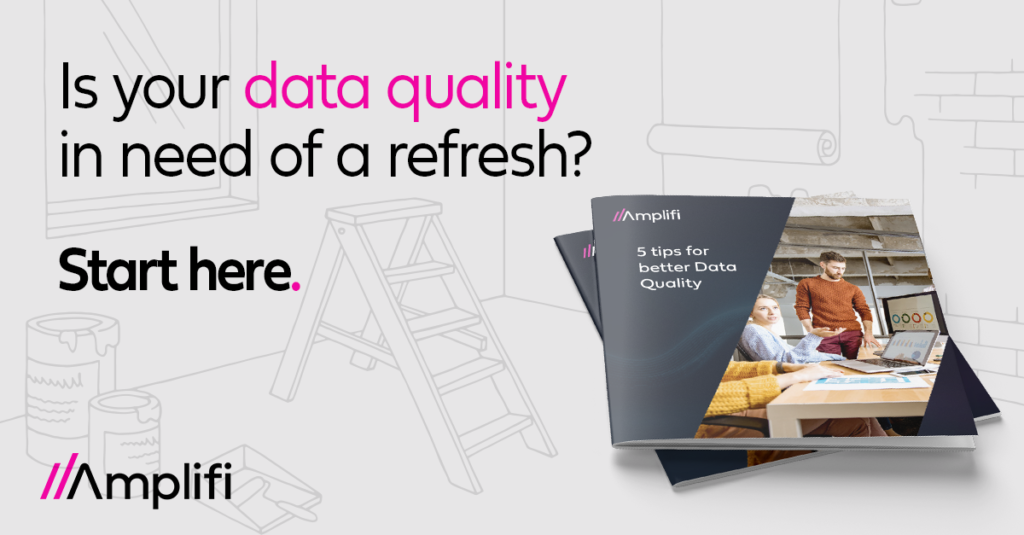If you’ve followed our recent series, you know that data issues are a bit like a cluttered house. And whether you decide to Love It or List It, you’ll need to address the quality of your raw materials: Your data.
Every digital initiative is only as successful as the quality of the master data that supports it. The adage really is true: garbage in, garbage out.
So, what are the signs that your data quality is in trouble?
Every organization has a bit of bad data boxed away in the corner. But you might have a serious issue when you see red flags like:
- Data often stored in the wrong place
- Duplicate data is rife
- You can’t find the data you need when you need it
- Flawed processes make new data quality efforts pointless
- Data is too poor to share with suppliers, vendors, partners, and other users
If any of these statements ring true, it’s a sign that you may need a thorough clean-up of your data house — and a concentrated look at the processes surrounding it.
To help you get started—or gain momentum along the way—here are six tips from Amplifi’s experts for how to spruce up your data quality.
1: Consider starting with a data quality assessment
Sometimes your business feels the pain of bad data, but it’s hard to put the finger on what’s going wrong. You think MDM might solve your problems…but you really aren’t sure.
If this sounds familiar, consider starting a data quality assessment to evaluate whether your data is good or bad — and what the impact of the bad data might be.
A new MDM or PIM platform is not always the answer. You may uncover other ways to improve your data quality without a software investment.
If MDM ends up being what you need, an assessment can help you build a business case to support the decision — plus give you an early framework to help your program succeed.
2: Gather your ambassadors early on
Make a point to identify the business data ambassadors within your organization — and bring them on board at the earliest opportunity.
How do you find them? Pay attention to those who can identify what’s wrong with their data, plus understand the rules that would likely fix the issues.
By giving them a voice regarding data improvements, you’ll gain allies who will help drive your data initiative forward. And as we shared in our post on data governance best practices, you should reward and highlight their successes in project newsletters or dashboards. These ambassadors may even aspire to become data owners down the road.
3: Spice things up with gamification
Speaking of dashboards, try adding some competitive spice and gamification to the process of improving data quality results.
Don’t be afraid to place names against items on your dashboards and tracking tools, or consider taking a team approach. Adding a bit of friendly competition can help boost your results while making data quality improvements more tangible and exciting for everyone.
4: Establish forums and meet regularly
Individual tracking is helpful, but you’ll also need to create data quality forums that meet regularly. These forums should include a key set of individuals and structured terms of reference. That way, you’ll have a consistent touch point to report on progress and raise data quality issues.
It’s not about adding more meetings to the mix — it’s about getting people out of silos and maintaining momentum. Forums help ensure data quality levels remain high and that cleaning efforts are small but regular. It also helps people across business areas understand the impact of their work to improve data from the perspective of their peers.
5: Embed data quality into everyday processes
There are times when you’ll need a surge of data cleansing. During a data migration is a perfect example. However, data quality shouldn’t be viewed as a one-and-done project.
Instead, data quality requires ongoing monitoring, continuous improvement, and constant evaluation. Make every effort to embed data quality management into your day-to-day routine — supported by the right tooling, processes, roles, and responsibilities to manage the full data quality lifecycle.
6: Save time with repeatable frameworks
To the point above, it’s easier to make something a regular part of your routine when it’s repeatable and, at least to some degree, automated.
You’ll want to avoid starting from scratch each time a new data set or attribute requires testing. Instead, build a data quality framework that you can reuse for any data sets that require the same logic. That way, you can put new data through and get quick results that help drive dashboards and reporting.
If you feel held back by bad data, these six tips can help give your data quality program a boost. And if you’re not sure where to start—or have a program that isn’t delivering the value you’d hoped—a data quality assessment may be the perfect first step.
No matter where you are in your data journey, Amplifi is here to guide you. We focus on helping you take incremental steps, so that you rapidly see the value and build confidence in the direction you’ve chosen. To learn more, contact our team or download a primer on our Data Quality Services.


